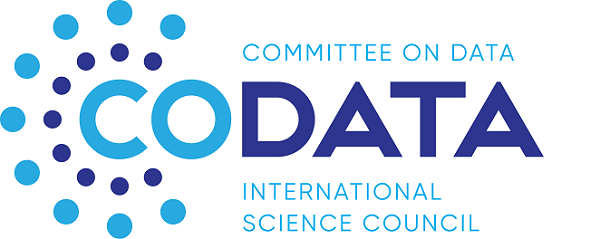This is the third in the series of short statements from candidates in the coming CODATA Elections at the General Assembly to be held on 15-16 November, 2021. Virginia Murray is a candidate for the CODATA Executive Committee as an Ordinary Member. She was nominated by the UK.
 Data is critical for the implementation of the recent synchronous adoption of the 2015 landmark UN agreements of the Sendia Framework for Disaster Risk Reduction 2015-2030, the Sustainable Development Goals (SDGs) [iii], and the COP21’s Paris Climate Conference[iv].
Data is critical for the implementation of the recent synchronous adoption of the 2015 landmark UN agreements of the Sendia Framework for Disaster Risk Reduction 2015-2030, the Sustainable Development Goals (SDGs) [iii], and the COP21’s Paris Climate Conference[iv].
With disasters increasing in intensity, severity and impacts across the globe, improving risk information across all types of hazards is critical to enhance our capacity to anticipate, prevent and respond to disaster risks from the local to the global scales. One barrier to sharing and using risk information effectively has been the lack of standardized definitions of hazards and a lack of guidance on the full range of hazards from hydrometeorological, extraterrestrial, geological, environmental, chemical, biological, technological and societal that need to be addressed in risk management.
The United Nations Office for Disaster Risk Reduction (UNDRR) and the International Science Council (ISC) jointly established a Technical Working Group (TWG) to identify the full scope of all hazards relevant to the Sendai Framework and the scientific definitions of these hazards. I was invited to chair the TWG with strong CODATA representation. The TWG and the project secretariat engaged with scientists in many organisations and UN agency scientific partners to find out how, via consensus building, an all hazard list could best be developed.
The UNDRR-ISC Hazard Definition and Classification Review – Technical report released in July 2020, and the Hazard Information Profiles: Supplement to UNDRR-ISC Hazard Definition & Classification Review – Technical Report released in October 2021. Aligned with the list of hazards published in the Technical Report, this Supplement comprises of a description of each of the 302 hazard information profiles (HIPs), developed using a consultative process by scientists and experts across the globe.
Responding to increasing calls for ‘a data revolution, rigorous accountability mechanisms and renewed global partnerships’, the UNDRR-ISC Hazard Definition and Classification Review – Technical report and its Supplement provide an important resource to support the implementation of disaster risk reduction and risk-informed investment, aligned with the Sendai Framework for Disaster Risk Reduction 2015–2030, but also the Sustainable Development Goals of Agenda 2030, the Paris Agreement on Climate Change and the Addis Ababa Action Agenda on Sustainable Financing. It provides a common set of hazard definitions to Governments and stakeholders to inform their strategies and actions on risk reduction and management. Specifically, the report and this supplement could support the development and updating of national and local disaster risk reduction strategies and loss databases, as well as integrating disaster risk reduction into national statistics, legal, accounting and regulatory frameworks and public and private policy, financing and investment decisions and is the first ever compilation of definitions of over 300 hazards that are relevant to the 2015 United Nations landmark agreements of the Sendai Framework for Disaster Risk Reduction, the Paris Agreement on climate change and the Sustainable Development Goals.
With more than 100 authors and over 130 reviewers involved in the development of the hazard information profiles, this work has stimulated a process of multi-disciplinary and multi-sectoral collaboration on using science-based information to better define hazards and the data requirements to measure them effectively. As chair of the TWG for the UNDRR/ISC Hazard Definition and Classification Report I thank all members of the TWG, all the authors and reviewers of the UNDRR/ISC Hazard Information Profiles for their commitment and engagement to deliver this work. To develop standardised understanding of hazards is such an important step forward that will facilitate, we believe, engagement with a range of users working in disaster risk reduction, emergency management, climate change, and sustainable development. The Hazard Information Profiles will ensure synchronisation among global and national mechanisms and processes. We hope these will be useful, usable and used by many.
The implementation of this and related work remains a vital contribution that I hope, as an ordinary member of the CODATA Executive Committee, I could continue to contribute if elected for the next two years
More widely my current roles are as a public health doctor committed to improving health emergency and disaster risk management as well as data access and transparency for effective reporting. I was appointed as Head of Global Disaster Risk Reduction (GDRR) for UK Health Security Agency (formerly Public Health England) in April 2014 and from 2020 have been working additionally as a UKHSA Senior Public Health Advisor for COVID-19. I am a member of the Integrated Research on Disaster Risk (IRDR) scientific committee and Co-Chair of IRDR’s Disaster Loss Data (DATA). I am a co-chair of the WHO Thematic Platform Health and Disaster Risk Management Research Network, and by working in collaboration with this network, she is one of the editors of the WHO Guidance on Research Methods for Health and Disaster Risk Management, published in October 2021. I am currently a member of UNSDSN TReNDS network. I am a visiting/honorary Professor and fellow at several universities.
